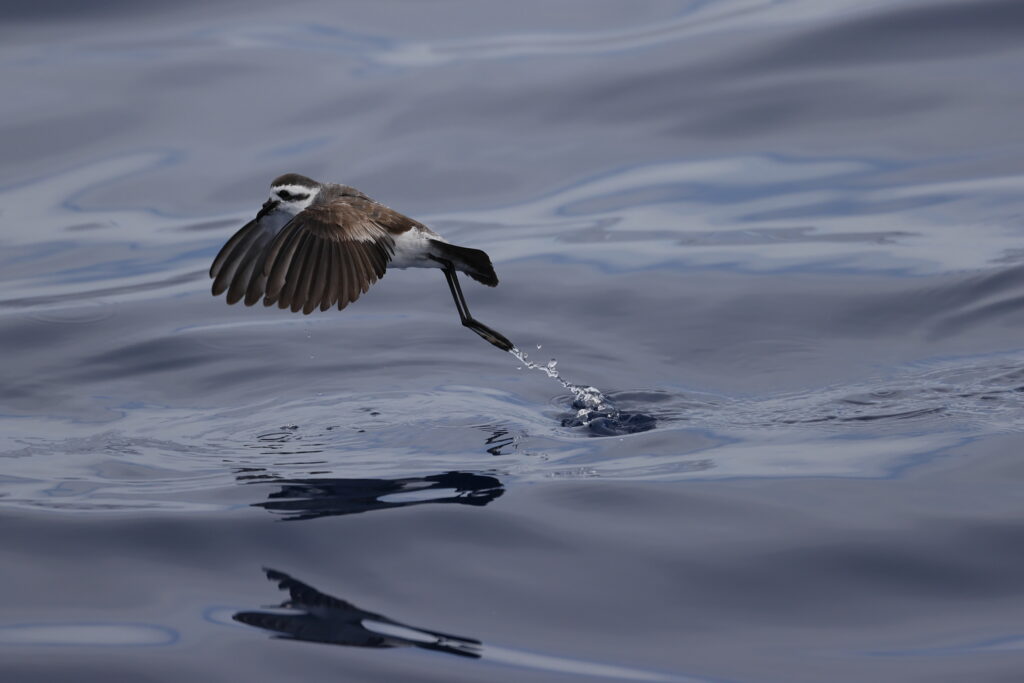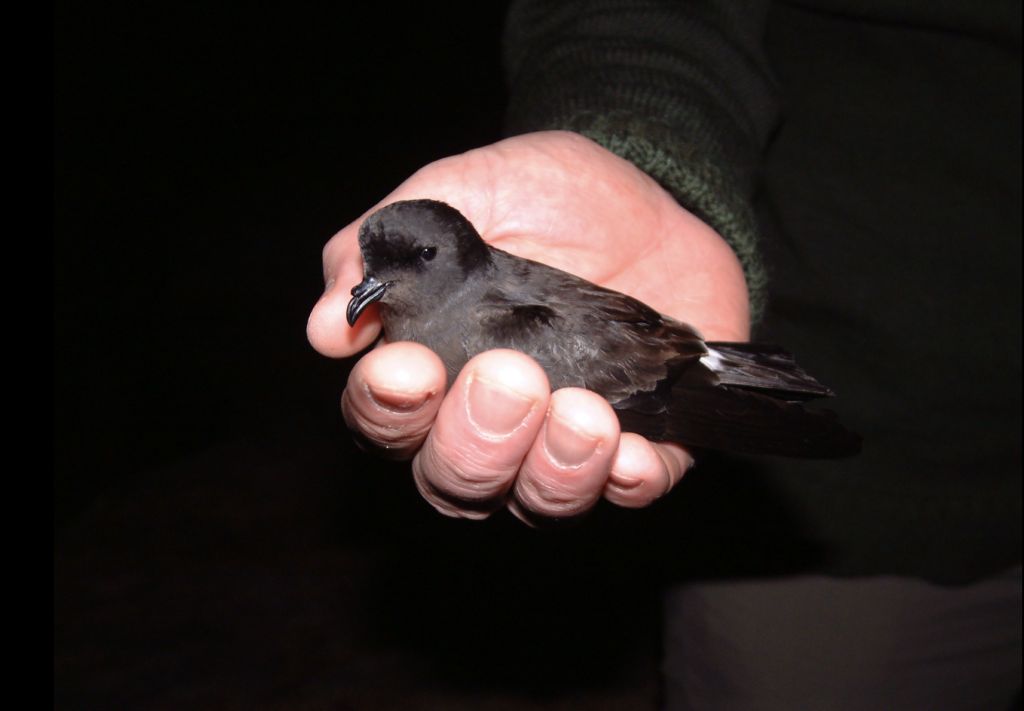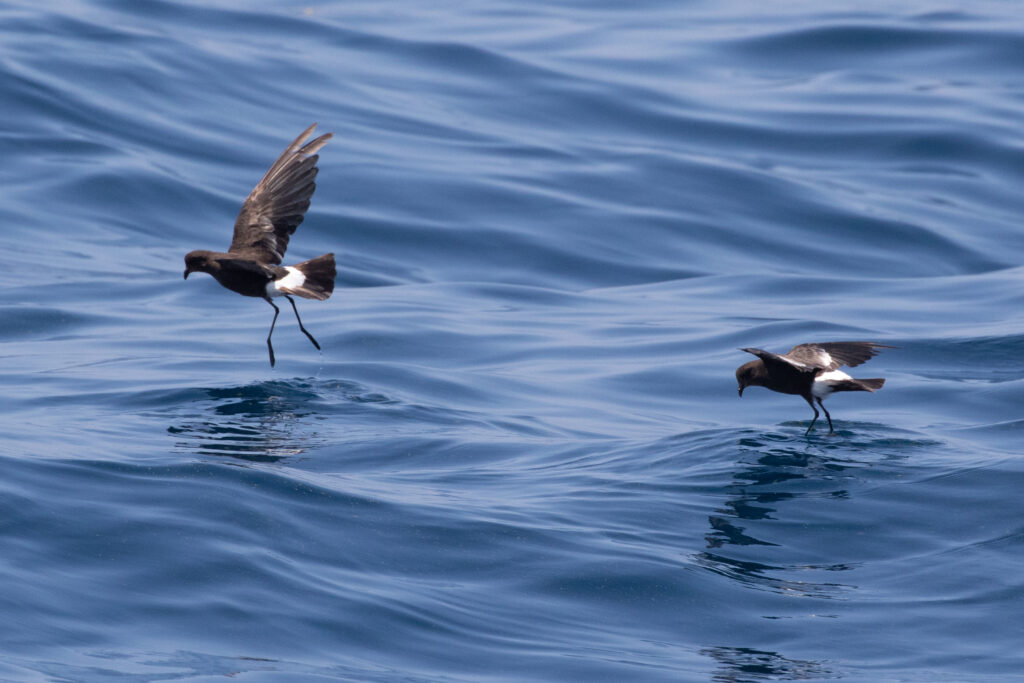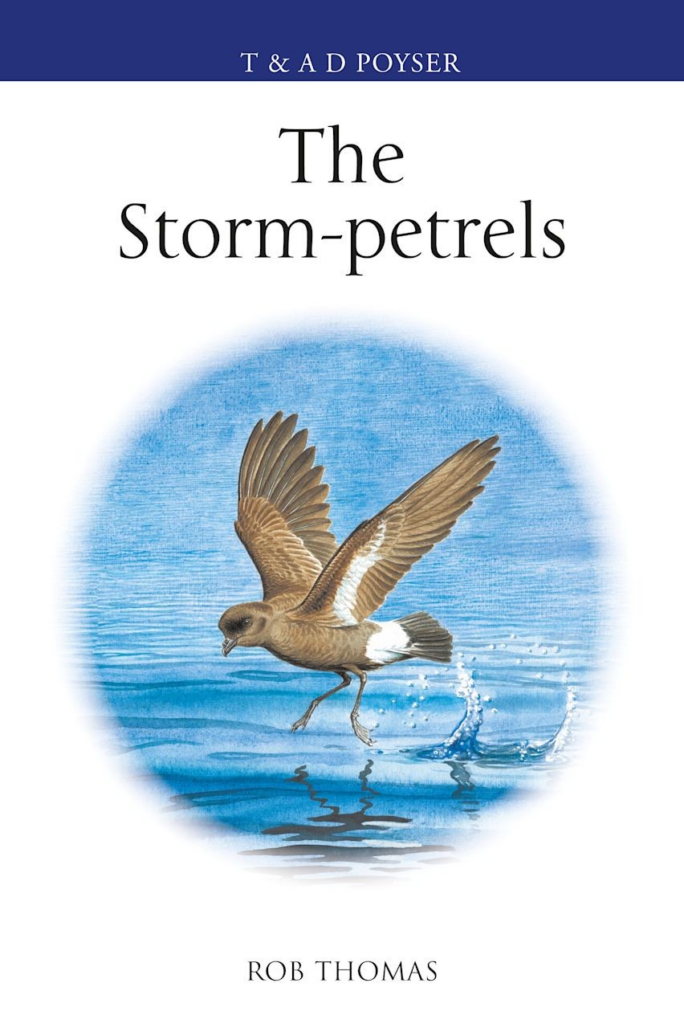 In the latest work of the Poyser series, Rob Thomas brings us the definitive work on Europe’s storm-petrels. Meticulously researched by one of the world leading experts, this book follows European Storm-petrels, tracking their lives as they breed, migrate and overwinter. Rob shares the story of the group’s evolution, behaviour, ecology and adaptations, interspersed with charming personal anecdotes and observations.
In the latest work of the Poyser series, Rob Thomas brings us the definitive work on Europe’s storm-petrels. Meticulously researched by one of the world leading experts, this book follows European Storm-petrels, tracking their lives as they breed, migrate and overwinter. Rob shares the story of the group’s evolution, behaviour, ecology and adaptations, interspersed with charming personal anecdotes and observations.

Rob Thomas has been working at Cardiff University for over 20 years. He is a senior lecturer in Zoology who specialises in bird behaviour and ecology, and has been studying storm-petrels since he was 16. His work has taken him to Wales, Scotland, Portugal and the Faroes, where he studies storm-petrel breeding behaviour and long-distance migration journeys. He is the co-director of Eco-explore Community Interest Company and is a trustee of the Initiative for Nature Conservation Cymru (INCC).
We recently had the opportunity to chat with Rob about what inspired him to write a book on storm-petrels, his favourite storm-petrel facts and more.
Can you tell us a little bit about yourself and what inspired you to write a book about Storm-petrels?
I’ve been birdwatching since I was a small boy – initially in the land-locked county of Breconshire in mid-Wales where I grew up, but as a teenager I started visiting the islands of west Wales and later Shetland, where I encountered storm-petrels for the first time. Since then, I have been fascinated by these remarkable little seabirds and the islands where they breed. Birdwatching led me into bird-ringing, and later into a career as a university researcher and lecturer, and storm-petrels have been the subject of much of my research and teaching work, including supervising various MSc and PhD projects on the behaviour, ecology and conservation of different storm-petrel species around the world. In recent years there has been an explosion of storm-petrel studies, partly due to advances in miniaturised tracking technology and the genetic methods that can be used to study storm-petrel diet and evolutionary relationships. Given the mass of new discoveries being made, together with renewed interest in the folklore, art and literature relating to storm-petrels, they became the natural subject for a new book about these truly remarkable seabirds.

What do you think is the biggest challenge facing these species, and how do you think we can work to minimise the impacts of this challenge in the future?
Seabirds are among the most threatened groups of birds globally, and storm-petrels themselves are vulnerable to a wide range of threats, including various forms of pollution (e.g. plastics, oil and other chemical pollutants, as well as light pollution), overfishing, and the looming impacts of rapid climate and oceanographic changes. For storm-petrels, perhaps the greatest threat of all comes from the arrival of non-native predators on their breeding islands; rats and cats have caused the local extinction of storm-petrels on numerous islands, as well as the likely global extinction of one species, the Guadalupe Storm-petrel. Fortunately, this threat can very effectively be addressed by the eradication of non-native predators, and this is steadily being carried out on seabird islands around the world, including in the UK and British Overseas Territories such as South Georgia. This is one of the most dramatically – and immediately – effective methods for helping storm-petrels that we have in the conservation toolbox.
There are often challenges with tagging storm-petrels due to their small stature. Are there any technological advances in surveying and research techniques that you would like to see employed and that would aid in tagging and monitoring them?
The miniaturisation of tracking technologies over recent years (geo-locators and GPS tags, as well as associated technologies such as accelerometers and depth-loggers) has led to a genuine revolution in our understanding of the behaviour and ecology of storm-petrels at sea. It is only in the last few years that GPS tags have become small enough to track birds as small as the smallest storm-petrels, including our own European Storm-petrel; the familiar species of the NE Atlantic (weighing approx. 25g), and we suddenly have a quite detailed understanding of where they go and what they do at sea. This tracking technology is now being deployed on some of the very rarest species (e.g. Monteiro’s storm-petrel of the Azores), to understand their conservation needs. One very exciting new development is the combination of tracking storm-petrels on their foraging trips at sea, with DNA analysis of the prey that storm-petrels deliver to their chicks, and remote-monitoring of behaviour in the nest burrow using miniaturised cameras and audio equipment – these can be used alongside more traditional methods, such as manual nest-checks and weighing of nestlings, to understand the factors on land and at sea that contribute to breeding success or failure.

I really enjoyed learning that the oldest European Storm-petrel recorded was estimated to be 40 years old, an astonishing age for such a small seabird. Do you have a favourite piece of information you discovered throughout researching and writing this book?
Yes! I have many favourite storm-petrel facts, including my provisional top five:1) storm-petrel chicks can hibernate (i.e. strategically reduce their body temperature and become torpid across multiple days) in order to save energy between food deliveries by their parents; 2) storm-petrels have the largest eggs relative to their body size (approx. 25-30% of the mother’s body mass) of any birds; 3) we still don’t know how many storm-petrel species there really are (the 28 formally-described species in the book is definitely an underestimate); 4) the New Zealand Storm-petrel was thought to be extinct for 176 years, until it was re-discovered in 2003 and happily seems to be thriving; and 5) the name ‘petrel’ may not refer to the disciple Peter walking on the waters of the Sea of Galilee as has often been stated, but may actually be derived from a much older old word ‘pet’, meaning ‘to break wind’ (yes, I am easily amused).
The world is currently facing a worrying decline in not only storm-petrel populations, but also many other seabird species worldwide. What would you say to people who might question the importance of safeguarding and conserving these animals
Most people have never heard of storm-petrels, let alone seen one. But this does not mean that storm-petrels are unimportant – they are perhaps more important that even I (a self-identifying storm-petrel fanatic) had assumed. Species do not need to be useful to humans to be an important part of the ecosystem that they inhabit; they are ecologically important in their own right, whether we are aware of them or not. Furthermore, storm-petrels reveal to us many of the ways in which our own activities as humans are impacting the natural world. Even storm-petrels, among the wildest of creatures, breeding in some of the most remote parts of our planet, are badly affected by our pollution, our entourage of non-native pets, livestock and plants, and they are highly sensitive biological indicators to the ongoing climatic and oceanographic impacts of our activities that are changing the composition of the planet’s atmosphere. For all of these reasons, it is important that we understand and act on the things that storm-petrels can tell us, or we ignore these messages at our peril.

Is there a species of storm-petrel that has so far eluded you, and which you would still love to see?
Oh yes, there are many! I have personally encountered only six or seven of the 28 or so storm-petrel species that are currently available (depending on how species are counted). I am hoping to spend the rest of my life occasionally meeting new storm-petrel species; two of my most-longed-for are the White-vented Storm-petrel (probably the smallest seabird in the world), and the Matsudaira’s Storm-petrel (one of the least-known and most-endangered of the storm-petrel species).
Finally, are you currently working on any other projects that you can tell us about?
Yes, an exciting new project involves working with local conservationists on the Faroe Islands (which host the largest colonies of European Storm-petrels) to understand the impacts (both positive and negative) of marine developments such as wind farms, fish farms and artificial lighting on these internationally important breeding colonies. Another very exciting new initiative is a collaborative project known as ‘Seaghosts’, led by Raül Ramos Garcia of the University of Barcelona in Spain, tracking the movements of different species of storm-petrels from breeding colonies across the North Atlantic, across their annual cycles. Seabirds ignore national boundaries, and such international collaborative projects are key to understanding threats and conservation solutions at a global scale.

Storm-petrels is published by Poyser Monographs and is available in harback and flexibound here.
